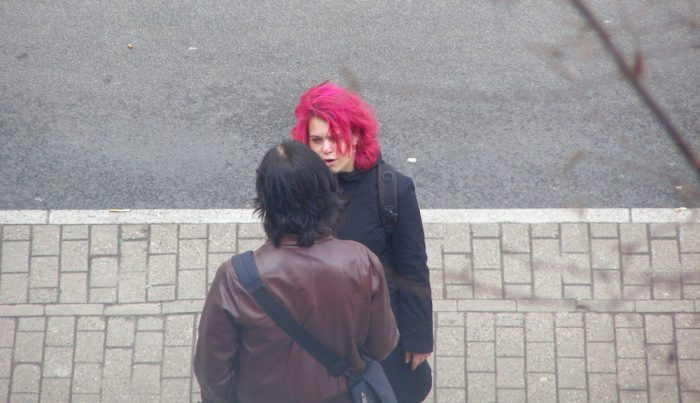Part of the journey to the light is the grit that catches you along the way.
One afternoon, as I was preparing to write this article, I was walking in the woods and it occurred to me: in mediation, we pull back the covers on issues that feel difficult; we uncover.
Then, we hold a space to look at what’s underneath; we discover. As we discover what’s there, we begin to recover something lost—and sometimes, that is love.
Let’s face it, conflict is inevitable.
Many of us seek to live a life free of conflict. Yet, no matter how many minutes we spend in meditation, hours in a yoga class, or years we’ve traveled around the sun, conflict is bound to arise.
We can’t really eliminate conflict as long as we are living, breathing human beings. But we can explore new and creative ways of engaging with conflict, to transform its grip on us and release into a more integrated state of being.
Over the past 20 years as a mediator, I’ve worked with hundreds of people on that undesirable emotional edge—withdrawal, anger, resentment, frustration, hurt, sadness, fear—you get the picture. My role is to hold the space for a difficult conversation. I help people uncover blind spots and gain new perspectives, then invite in creative ideas for conflict transformation, once we can see more clearly (I do help people resolve conflict, yet the more foundational work is in the transformations that occur along the way).
I find that those moments when I feel a strong trigger followed by a reaction come from a less conscious part of myself. So, when we choose to address conflict, we are automatically choosing a higher level of consciousness.
Until now, my work has relied on wisdom from the neck up. Since I’m a dancer and kinesthetic learner, I have realized that in using only our brain to resolve challenges, we’re using only a fraction of our intelligence. What about the rest of the body? Is there not a powerhouse of wisdom in the gut? What does the heart have to say about this? When our bodies are engaged, tuned to a resonant vibration, what else is possible?
I am curious.
What if movement and sound were applied to a mediation process? Here’s a short list of tools that come to mind, that I am endeavoring to add to my practice as a mediator. (I welcome comments from folks who may already be using physical methods for problem-solving.)
>> Vibration. Use the vibration of sound, its resonance, to help prepare the body/mind for a challenging conversation and to bring the session to completion.
>> Somatic awareness. Use body awareness, starting with awareness of breath and heartbeat and moving through the spine and limbs, to aid in connecting to ourselves in the present moment.
>> Movement. Could moving our physical bodies in space aid our minds in moving from stuck positions? Walk, dance, run, crawl, roll, jump, twirl.
>> Repetition. If we surrender to a movement pattern and add breath and/or a repetition, can that help us access information that is otherwise unavailable to us?
>> Use of space. Could moving from place to place on a map to represent your level of presence in your body? Can it be used as a gauge for readiness for dialogue?
Below are a few other things I’ve learned along the way about having difficult conversations that may be helpful:
Be Mindful about Timing
>> Don’t try to solve a problem when you’re “heated up.” Take time to cool down a bit. It could be an hour, a day, or even a week.
>> Schedule a time to address the problem. Or, if you prefer spontaneity, check in with the other person to see if it’s a good time for them to talk. Finding dedicated time for a difficult conversation helps to create uninterrupted space for conversation.
Make Agreements for the Dialogue
>> Agree to be self-responsible. Be willing to consider how you have contributed to the challenge. Agree that if you or the other person begin to feel tired, hungry, or depleted, you’ll take a break.
>> Saddle the judging mind.
>> Apply curiosity in place of judgement. Before you judge someone’s behavior, get curious about it. Hmm, I wonder why they did this…? Maybe even ask them—in a non-challenging, truly curious way.
>> Marshall Rosenberg’s model for Nonviolent Communication can provide a map for expressing your needs in a way that takes the judgmental focus off the other person. And maybe even agree to be vulnerable and allow the other’s vulnerability.
Keep Perspective on Your Progress
>> Remember these conversations have ebbs and flows, openings and closings, hot spots and warm spots. You may feel as if you are making progress, and then hit an obstacle, then back to understanding, and so on.












Read 0 comments and reply